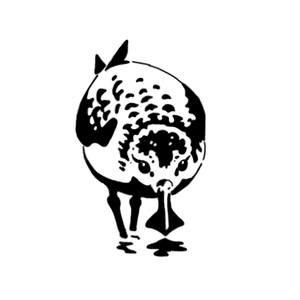-
Home
About Us The East Asian-Australasian Flyway Partnership (EAAFP) was launched on 6 November 2006. It aims to protect migratory waterbirds, their habitats and the livelihoods of people dependent upon them. There are currently 39 Partners including 18 national governments, 6 intergovernmental agencies, 13 international NGOs, 1 international organisation and 1 international private enterprise. Our Mission The Partnership provides […]
Continue reading -
“Year of the Cranes” Story series #4 – Borzya the White-naped Crane who link up 5 countries in the Flyway.
Migratory birds are travelers, they are messengers and connect people from different places. This White-naped Crane named Borzya brought us a story of how she links people from Russia, Mongolia, China, Korea and Japan bridging at least 5 EAAFP Flyway Network Sites. White-naped Crane Borzya is named after a river in Southeast Russia, where she […]
Continue reading -
Task Force on Illegal Hunting, Taking and Trade of Migratory Waterbirds
IntroductionHunting is a substantial threat to migratory waterbirds in the EAAF and has been linked to the decline of many threatened species in the Flyway. In many parts of this diverse region, hunting is considered as illegal because species targeted are protected under national or sub-national legislation.The Task Force was established with the mandate of […]
Continue reading -
Yellow Sea Ecoregion Task Force
Bruce McKinlay Department of Conservation representative to the East Asian-Australasian Flyway Partnership Department of Conservation PO Box 5244 Dunedin NEW ZEALAND Tel: 006434746939 E-mail: bmckinlay@doc.govt.nz Bio: Bruce McKinlay has worked in wildlife management and conservation for the New Zealand Government since the 1980’s. Based in Dunedin, Southern NZ, his work has focused on penguin, invertebrate, lizard, forest bird and seabird conservation. In […]
Continue reading -
Scaly-sided Merganser Task Force
Scaly-sided Merganser Task Force The Scaly-sided Merganser Mergus squamatus has a very small population which is suspected to be undergoing a continuing and rapid decline as a result of illegal hunting, logging and drowning. The species is therefore listed as Endangered under IUCN Red List. Due to a continuing and sharp decline in population, the formation […]
Continue reading -
Spoon-billed Sandpiper Task Force
In 2004 several partners active in the conservation of the globally threatened Spoon-billed Sandpiper joined the Recovery Team chaired by Evgeny Syroechkovskiy and later by Christoph Zöckler. With the growing demand of work, the finalization of the CMS Single Species Action Plan in 2008 and the continuing support from BirdLife International and many other organizations, […]
Continue reading -
Far Eastern Curlew Task Force
The Far Eastern Curlew Numenius madagascariensis is endemic to the East Asian – Australasian Flyway, is the largest migratory shorebird species in the world and is listed Endangered under IUCN criteria (IUCN, 2015). Recent evidence suggests that the Far Eastern Curlew has undergone a significant decline over the past 20 years. Drivers of this decline are likely […]
Continue reading -
Baer’s Pochard Task Force
The Baer’s Pochard Aythya baeri is a Critically Endangered species. It has undergone a decline that has accelerated rapidly in recent years and has pushed this duck to the edge of extinction. We need to act urgently to save the Baer’s Pochard from extinction in the wild. Nowadays, the species occurs predominantly within China, during both the breeding season […]
Continue reading -
Amur-Heilong Basin Task Force
This vast river basin comprising parts of Mongolia, Russia and China is the only breeding area for many cranes and other threatened waterbirds. Management of water resources and river channels is becoming more complex. In the Daurian steppes, prolonged drought and climate change have prevented breeding. Existing trans-border initiatives such as the Dauria International Protected […]
Continue reading -
Shorebird Working Group
Under the former Asia-Pacific Migratory Waterbird Conservation Strategies (1996 – 2000; 2001 – 2006), the Shorebird Working Group was established to implement the Shorebird Action Plans. This was effective in facilitating the collaboration of researchers, site managers and governments within the Flyway. A Shorebird Site Network of 48 sites was established and coordinated by a […]
Continue reading




